Dr. Rico Fischer
Contact
until 2023: Helmholtz Centre for Environmental Research - UFZ Leipzig, Department of Ecological Modelling
since 11/2023:
Julius Kühn-Institute (JKI) - Federal Research Center for Cultivated Plants
Institute for Forest Protection
+49 3946 47-4017
rico.fischer@julius-kuehn.de
https://www.julius-kuehn.de/ws/personal/p/rico-fischer
Research Interests
Expert in Forest Modelling, Remote Sensing and Digital Forest Twins
- modelling the dynamics of European forests
- linking multi-sensor remote sensing with ecological modelling
- developing digital forest twins
- carbon cycle and disturbances in forest ecosystems
- impact of fire, climate change and land use change on forests in Germany
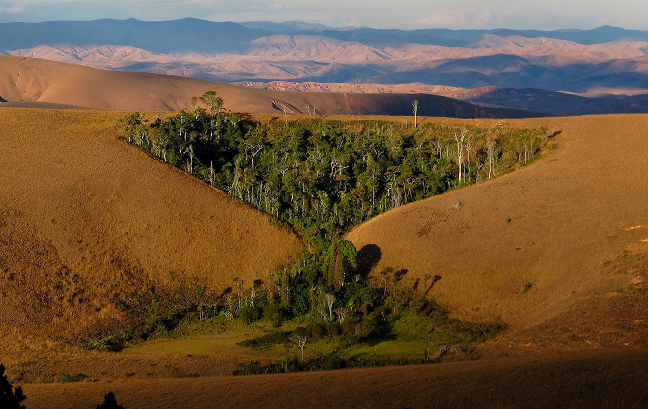
Projects
Forest Modeling
The forest gap model FORMIND is an individual-based vegetation model that simulates the growth of forests on the hectare scale. It allows to explore forest dynamics and forest structure including also processes like gap building (falling down of large trees).
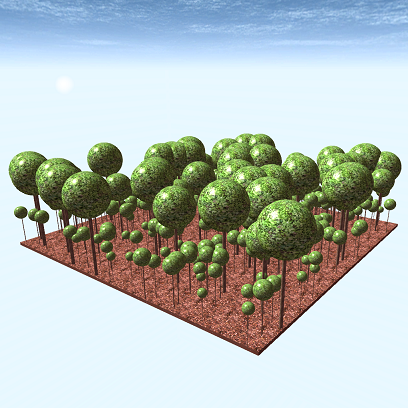
Simulating the carbon stocks and fluxes of tropical and temperate forests in a changing world
Analyzing the carbon fluxes of a tropical forest in Tansania, Africa. We simulated biomass dynamics, forest productivity and carbon fluxes for a sub-montane forest at Mt. Kilimanjaro.
We simulated with FORMIND the daily carbon fluxes for the forest site Hohes Holz in Germany, examining the influence of individual species and tree sizes on these fluxes.
Simulating the dynamics of lowland tropical forest in a changing world. Analyzing the impact of drought and logging on rainforest structure and dynamics.
Evaluating the impact of fire and selective logging on forest dynamics
FORMIND was extended by a fire module, which was used to investigate how long a tropical forest in Africa needs to recover after a fire event. Depending on which forest variable is considered, it is more than 100 years.
Analyzing the mid- and long-term impacts of different management intensities on the dynamic and structure of a species-rich tropical lowland forest of French Guiana. High selective logging intensities prolong the recovery times of ecosystem functions such as biomass and productivity.
A multi-scaled analysis of forest structure and sampling strategies
Consideration of scale is essential when examining structural relationships in forests. Sampling strategy also plays a critical role in estimating forest characteristics. The scale as well as the sampling are crucial to correctly assess biomass in forests.
Publication: An analysis of forest biomass sampling strategies across scales.
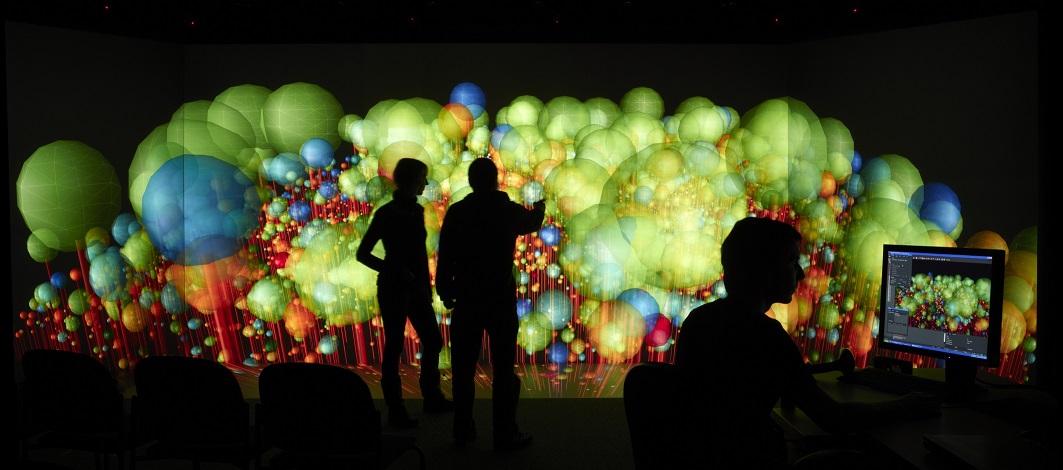
Remote Sensing
Emissions from the edge of the forest: global forest fragmentation
Deforestation has a fatal effect on the remaining forest fragments. The vegetation at the edges is exposed to an unfavorable microclimate: Direct sunlight and higher wind speeds cause these areas to dry out more quickly and tree mortality increases. We analyzed the state and dynamics of tropical forest fragmentation and its impact on the global carbon cycle using high-resolution remote sensing data. We found that fragmentation is accelerating with serve consequences for the global carbon cycle.
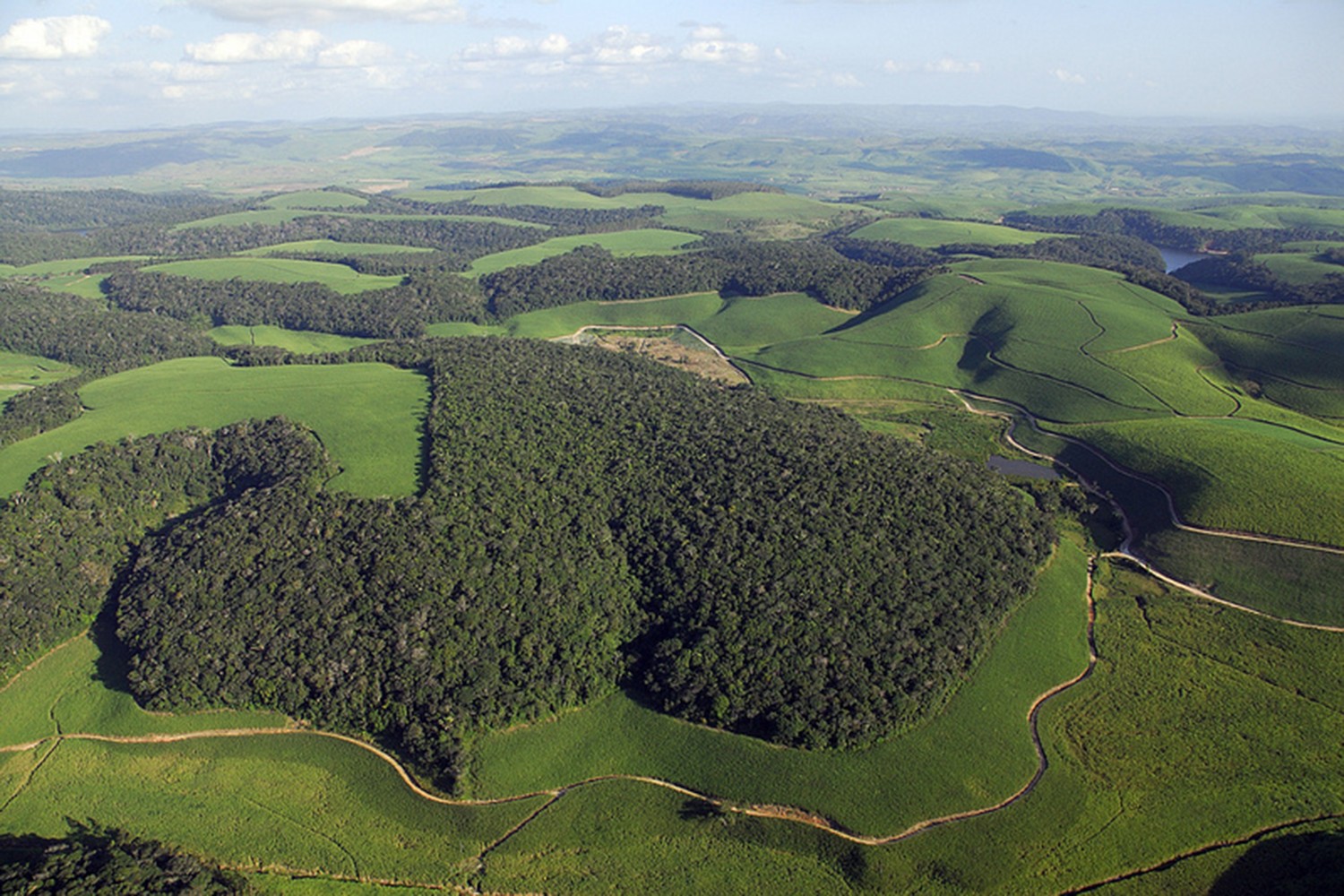
Publication: Global patterns of tropical forest fragmentation
Press release: Forest edges in the tropics increase carbon emissions
Estimating forest structure from remote sensing
We investigated the potential of lidar and radar data to monitor forest biomass and forest structure and its temporal variations. Forest structure identification can be used to distinguish between different forest stages and different types induced by logging, natural disturbance, or forest management.
Publication: Remote Sensing Measurements of Forest Structure Types for Ecosystem Service Mapping
Publication: Monitoring of Forest Structure Dynamics by Means of L-Band SAR Tomography
Linking Remote Sensing with Ecological Modeling
An innovative research field is the combination of individual-based vegetation models with the latest remote sensing technology. For this purpose, the high degree of detail of the models in combination with the full-coverage measurement of the earth is used to determine the different ecosystem functions.
Estimating forest biomass and carbon fluxes from remote sensing
Forest models can help to better interpret remote sensing data. The linkage of models with remote sensing (e.g., lidar) allow to develop robust relationships between remote sensing metrics and forest variables like biomass. This can be done for local studies as well as for whole continents. Integrating more than 100 million GEDI measurements (see https://gedi.umd.edu/) into the forest model FORMIND, we have mapped forest productivity throughout the Amazon.
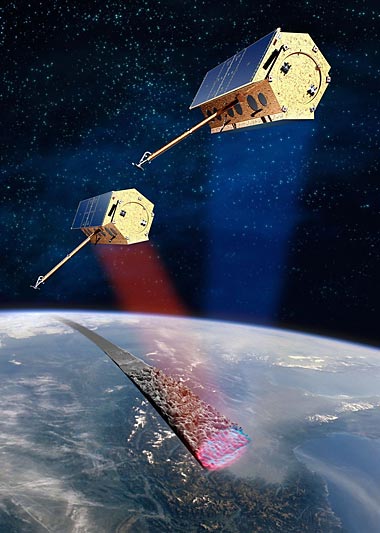
Publication: Mapping Amazon forest productivity by fusing GEDI lidar waveforms with an individual-based forest model
Publication: Linking lidar and forest modeling to assess biomass estimation across scales and disturbance states
The role of forest structure for biomass and productivity
Future remote sensing missions will have the capability to provide information on forest structure (e.g., from lidar or radar). By linking remote sensing techniques with vegetation modelling, the role of forest structure for ecosystem services of forests can be investigated. This will lead to more accurate assessments of forest biomass and productivity around the globe.
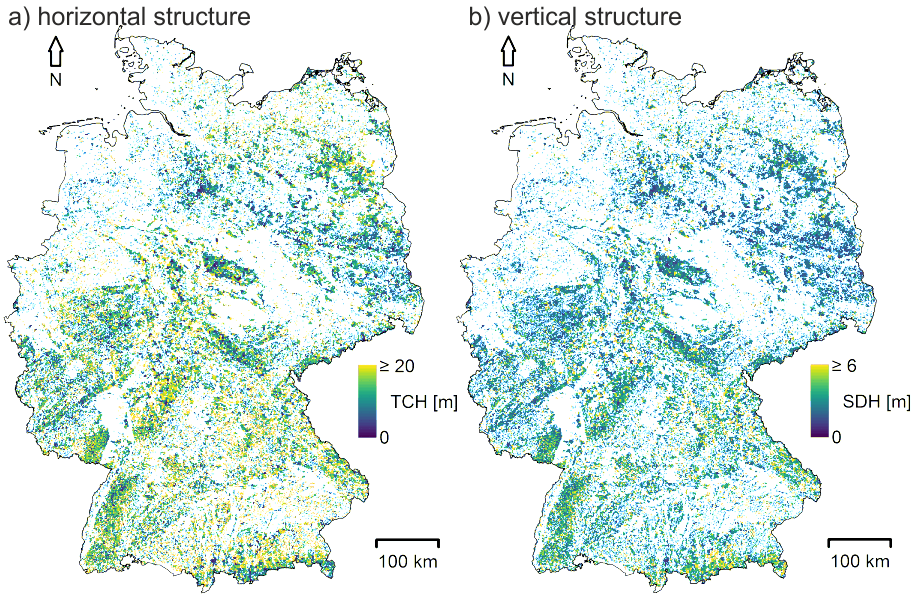
Science in the News
Forest Fragmentation in the Tropics
press release, 06. September 2021
Forest edges in the tropics increase carbon emissions
Press release, 14. February 2018
Deforestation and Fragmentation in the tropics.
Press release, 30. March 2017
Emissions from the edge of the forest.
Fires and Deforestation in the Amazon
Spiegel, Juni 2023
"Bäume pflanzen fürs Klima – ist das wirklich so einfach?"
Spiegel, November 2022
"Ist der Amazonas-Regenwald noch zu retten?"
Spiegel, November 2022
"Waldschutzinitiative auf der Klimakonferenz - Einfach nur Geld zu verteilen, reicht nicht"
Federal Ministry of Education and Research, August 2019
"Regenwälder sind mehr in Gefahr als je zuvor"
ZDF, August 2019
Verheerende Brände weltweit - Zündquelle Mensch.
Spiegel Online, August 2019
"Der Regenwald braucht mindestens hundert Jahre, um sich zu erholen"
Federal Ministry of Education and Research, Oktober 2019
#Fragen4Future Amazonas Abholzung?
Press release, November 2019
The forests of the Amazon are an important carbon sink.
Klimawald 2.0, July 2020, Bayerische Staatsforsten
„Der Amazonas könnte von einer Kohlenstoffsenke zur -quelle werden.“
Zoo Leipzig and Visualization of Forests
Zoo Live, August 2012
Baummessung in Gondwanaland (page 10).
Spiegel TV, 24. May 2012
Virtueller Waldspaziergang: In 3D durch Sachsens Tropen.
Press release, 28. June 2011
Gondwanaland hilft Wissenschaftlern, Waldmodelle zu verbessern.
Miscellaneous
Resonator - Der Forschungspodcast der Helmholtz-Gemeinschaft, 25. Oktober 2019
UFZ-Newsletter, February 2014
2024 (5)
- Albrecht, L., Huth, A., Fischer, R., Papathanassiou, K., Antropov, O., Lehnert, L. (2024):
Estimating forest structure change by means of wavelet statistics using TanDEM-X datasets
15th European Conference on Synthetic Aperture Radar, Munich, Germany, 23-26 April 2024
Electronic Proceedings (EUSAR) 2024
Institute of Electrical and Electronics Engineers (IEEE), New York, NY, p. 1 - 5 - Anand, M., Bohn, F.J., Camps-Valls, G., Fischer, R., Huth, A., Sweet, L.-B., Zscheischler, J. (2024):
Identifying compound weather drivers of forest biomass loss with generative deep learning
Environ. Data Sci. 3 , e4 10.1017/eds.2024.2 - Bauer, L., Huth, A., Bogdanowski, A., Müller, M., Fischer, R. (2024):
Edge effects in Amazon forests: Integrating remote sensing and modelling to assess changes in biomass and productivity
Remote Sens. 16 (3), art. 501 10.3390/rs16030501 - Díaz-Yáñez, O., Käber, Y., Anders, T., Bohn, F., Braziunas, K.H., Brůna, J., Fischer, R., Fischer, S.M., Hetzer, J., Hickler, T., Hochauer, C., Lexer, M.J., Lischke, H., Mairota, P., Merganič, J., Merganičová, K., Mette, T., Mina, M., Morin, X., Nieberg, M., Rammer, W., Reyer, C.P.O., Scheiter, S., Scherrer, D., Bugmann, H. (2024):
Tree regeneration in models of forest dynamics: A key priority for further research
Ecosphere 15 (3), e4807 10.1002/ecs2.4807 - Holtmann, A., Huth, A., Bohn, F., Fischer, R. (2024):
Assessing the impact of multi-year droughts on German forests in the context of increased tree mortality
Ecol. Model. 492 , art. 110696 10.1016/j.ecolmodel.2024.110696
2023 (2)
- Díaz-Yáñez, O., Käber, Y., Anders, T., Bohn, F., Braziunas, K.H., Brůna, J., Fischer, R., Fischer, S.M., Hetzer, J., Hickler, T., Hochauer, C., Lexer, M.J., Lischke, H., Mairota, P., Merganič, J., Merganičová, K., Mette, T., Mina, M., Morin, X., Nieberg, M., Rammer, W., Reyer, C.P.O., Scheiter, S., Scherrer, D., Bugmann, H. (2023):
Tree recruitment in Central Europe: observed and simulated data
ETH Zürich Research Collection 10.3929/ethz-b-000643426 - Downie, E., Fischer, R., Knapp, N., Ghizoni Santos, E., Fassnacht, F., Camargo, J.L., Andrade, A., Maeda, E. (2023):
Creating virtual forests to understand fragmentation in tropical ecosystems
EGU General Assembly 2023, Vienna, Austria, 24–28 Apr 2023
EGUsphere
Copernicus Publications, EGU23-11315 10.5194/egusphere-egu23-11315
2022 (5)
- Bahrami, B., Hildebrandt, A., Thober, S., Rebmann, C., Fischer, R., Samaniego, L., Rakovec, O., Kumar, R. (2022):
Parsimonious Canopy Model (PCM) v1.0
Version: v1.0 Zenodo 10.5281/zenodo.6373776 - Bahrami, B., Hildebrandt, A., Thober, S., Rebmann, C., Fischer, R., Samaniego, L., Rakovec, O., Kumar, R. (2022):
Developing a parsimonious canopy model (PCM v1.0) to predict forest gross primary productivity and leaf area index of deciduous broad-leaved forest
Geosci. Model Dev. 15 (18), 6957 - 6984 10.5194/gmd-15-6957-2022 - Bahrami, B., Kumar, R., Thober, S., Hildebrandt, A., Fischer, R., Samaniego, L., Rebmann, C. (2022):
Predicting forest gross primary productivity and leaf area index by coupling light use efficiency and leaf phenology in a parsimonious canopy model
EGU General Assembly 2022, Vienna, Austria, 23–27 May 2022
EGUsphere
Copernicus Publications, EGU22-8844 10.5194/egusphere-egu22-8844 - Duncanson, L., Kellner, J.R., Armston, J., Dubayah, R., Minor, D.M., Hancock, S., Healey, S.P., Patterson, P.L., Saarela, S., Marselis, S., Silva, C.E., Bruening, J., Goetz, S.J., Tang, H., Hofton, M., Blair, B., Luthcke, S., Fatoyinbo, L., Abernethy, K., Alonso, A., Andersen, H.-E., Aplin, P., Baker, T.R., Barbier, N., Bastin, J.F., Biber, P., Boeckx, P., Bogaert, J., Boschetti, L., Brehm Boucher, P., Boyd, D.S., Burslem, D.F.R.P., Calvo-Rodriguez, S., Chave, J., Chazdon, R.L., Clark, D.B., Clark, D.A., Cohen, W.B., Coomes, D.A., Corona, P., Cushman, K.C., Cutler, M.E.J., Dalling, J.W., Dalponte, M., Dash, J., de-Miguel, S., Deng, S., Woods Ellis, P., Erasmus, B., Fekety, P.A., Fernandez-Landa, A., Ferraz, A., Fischer, R., Fisher, A.G., García-Abril, A., Gobakken, T., Hacker, J.M., Heurich, M., Hill, R.A., Hopkinson, C., Huang, H., Hubbell, S.P., Hudak, A.T., Huth, A., Imbach, B., Jeffery, K.J., Katoh, M., Kearsley, E., Kenfack, D., Kljun, N., Knapp, N., Král, K., Krůček, M., Labrière, N., Lewis, S.L., Longo, M., Lucas, R.M., Main, R., Manzanera, J.A., Vásquez Martínez, R., Mathieu, R., Memiaghe, H., Meyer, V., Monteagudo Mendoza, A., Monerris, A., Montesano, P., Morsdorf, F., Næsset, E., Naidoo, L., Nilus, R., O’Brien, M., Orwig, D.A., Papathanassiou, K., Parker, G., Philipson, C., Phillips, O.L., Pisek, J., Poulsen, J.R., Pretzsch, H., Rüdiger, C., Saatchi, S., Sanchez-Azofeifa, A., Sanchez-Lopez, N., Scholes, R., Silva, C.A., Simard, M., Skidmore, A., Stereńczak, K., Tanase, M., Torresan, C., Valbuena, R., Verbeeck, H., Vrska, T., Wessels, K., White, J.C., White, L.J.T., Zahabu, E., Zgraggen, C. (2022):
Aboveground biomass density models for NASA’s Global Ecosystem Dynamics Investigation (GEDI) lidar mission
Remote Sens. Environ. 270 , art. 112845 10.1016/j.rse.2021.112845 - Hiltner, U., Huth, A., Fischer, R. (2022):
Importance of the forest state in estimating biomass losses from tropical forests: combining dynamic forest models and remote sensing
Biogeosciences 19 (7), 1891 - 1911 10.5194/bg-19-1891-2022
2021 (12)
- Bauer, L., Knapp, N., Fischer, R. (2021):
Mapping Amazon forest productivity by fusing GEDI lidar waveforms with an individual-based forest model
Remote Sens. 13 (22), art. 4540 10.3390/rs13224540 - Bruening, J.M., Fischer, R., Bohn, F.J., Armston, J., Armstrong, A.H., Knapp, N., Tang, H., Huth, A., Dubayah, R. (2021):
Challenges to aboveground biomass prediction from waveform lidar
Environ. Res. Lett. 16 (12), art. 125013 10.1088/1748-9326/ac3cec - Fischer, R. (2021):
The long-term consequences of forest fires on the carbon fluxes of a tropical forest in Africa
Appl. Sci. 11 (10), art. 4696 10.3390/app11104696 - Fischer, R., Taubert, F., Müller, M.S., Groeneveld, J., Lehmann, S., Wiegand, T., Huth, A. (2021):
Accelerated forest fragmentation leads to critical increase in tropical forest edge area
Sci. Adv. 7 (37), eabg7012 10.1126/sciadv.abg7012 - Hiltner, U., Huth, A., Hérault, B., Holtmann, A., Bräuning, A., Fischer, R. (2021):
Climate change alters the ability of neotropical forests to provide timber and sequester carbon
For. Ecol. Manage. 492 , art. 119166 10.1016/j.foreco.2021.119166 - Holtmann, A., Huth, A., Pohl, F., Rebmann, C., Fischer, R. (2021):
Carbon sequestration in mixed deciduous forests: the influence of tree size and species composition derived from model experiments
Forests 12 (6), art. 726 10.3390/f12060726 - Holtmann, A., Huth, A., Pohl, F., Rebmann, C., Fischer, R. (2021):
Carbon sequestration in mixed deciduous forests: The importance of mid-storey trees for forest productivity
EGU General Assembly 2021, online, 19–30 Apr 2021
EGUsphere
Copernicus Publications, EGU21-7228 10.5194/egusphere-egu21-7228 - Knapp, N., Huth, A., Fischer, R. (2021):
Tree crowns cause border effects in area-based biomass estimations from remote sensing
Remote Sens. 13 (8), art. 1592 10.3390/rs13081592 - Maciel, E.A., Martins, V.F., Dantas de Paula, M., Huth, A., Guilherme, F.A.G., Fischer, R., Giles, A., Barbosa, R.I., Cavassan, O., Martins, F.R. (2021):
Defaunation and changes in climate and fire frequency have synergistic effects on aboveground biomass loss in the Brazilian savanna
Ecol. Model. 454 , art. 109628 10.1016/j.ecolmodel.2021.109628 - Maréchaux, I., Langerwisch, F., Huth, A., Bugmann, H., Morin, X., Reyer, C.P.O., Seidl, R., Collalti, A., Dantas de Paula, M., Fischer, R., Gutsch, M., Lexer, M.J., Lischke, H., Rammig, A., Rödig, E., Sakschewski, B., Taubert, F., Thonicke, K., Vacchiano, G., Bohn, F.J. (2021):
Tackling unresolved questions in forest ecology: The past and future role of simulation models
Ecol. Evol. 11 (9), 3746 - 3770 10.1002/ece3.7391 - Ribeiro, N.S., Hildt Armstrong, A., Fischer, R., Kim, Y.-S., Shugart, H.H., Ribeiro-Barros, A.I., Chauque, A., Tear, T., Washington-Allen, R., Bandeira, R.R. (2021):
Prediction of forest parameters and carbon accounting under different fire regimes in Miombo woodlands, Niassa Special Reserve, Northern Mozambique
Forest Policy Econ. 133 , art. 102625 10.1016/j.forpol.2021.102625 - Taubert, F., Fischer, R., Knapp, N., Huth, A. (2021):
Deriving tree size distributions of tropical forests from lidar
Remote Sens. 13 (1), art. 131 10.3390/rs13010131
2020 (4)
- Armstrong, A.H., Huth, A., Osmanoglu, B., Sun, G., Ranson, K.J., Fischer, R. (2020):
A multi-scaled analysis of forest structure using individual-based modeling in a costa rican rainforest
Ecol. Model. 433 , art. 109226 10.1016/j.ecolmodel.2020.109226 - di Porcia e Brugnera, M., Fischer, R., Taubert, F., Huth, A., Verbeeck, H. (2020):
Lianas in silico, ecological insights from a model of structural parasitism
Ecol. Model. 431 , art. 109159 10.1016/j.ecolmodel.2020.109159 - Hetzer, J., Huth, A., Wiegand, T., Dobner, H.-J., Fischer, R. (2020):
An analysis of forest biomass sampling strategies across scales
Biogeosciences 17 (6), 1673 - 1683 10.5194/bg-17-1673-2020 - Knapp, N., Fischer, R., Cazcarra-Bes, V., Huth, A. (2020):
Structure metrics to generalize biomass estimation from lidar across forest types from different continents
Remote Sens. Environ. 237 , art. 111597 10.1016/j.rse.2019.111597
2019 (5)
- Andronache, I., Marin, M., Fischer, R., Ahammer, H., Radulovic, M., Ciobotaru, A.-M., Jelinek, H.F., Di Ieva, A., Pintilii, R.-D., Drăghici, C.-C., Herman, G.V., Nicula, A.-S., Simion, A.-G., Loghin, I.-V., Diaconu, D.-C., Peptenatu, D. (2019):
Dynamics of forest fragmentation and connectivity using particle and fractal analysis
Sci. Rep. 9 , art. 12228 10.1038/s41598-019-48277-z - Exbrayat, J.-F., Bloom, A.A., Carvalhais, N., Fischer, R., Huth, A., MacBean, N., Williams, M. (2019):
Understanding the land carbon cycle with space data: Current status and prospects
Surv. Geophys. 40 (4), 735 - 755 10.1007/s10712-019-09506-2 - Fischer, R., Knapp, N., Bohn, F., Huth, A. (2019):
Remote sensing measurements of forest structure types for ecosystem service mapping
In: Schröter, M., Bonn, A., Klotz, S., Seppelt, R., Baessler, C. (eds.)
Atlas of ecosystem services : drivers, risks, and societal responses
Springer International Publishing, Cham, p. 63 - 67 10.1007/978-3-319-96229-0_11 - Fischer, R., Knapp, N., Bohn, F., Shugart, H.H., Huth, A. (2019):
The relevance of forest structure for biomass and productivity in temperate forests: New perspectives for remote sensing
Surv. Geophys. 40 (4), 709 - 734 10.1007/s10712-019-09519-x - Rödig, E., Knapp, N., Fischer, R., Bohn, F.J., Dubayah, R., Tang, H., Huth, A. (2019):
From small-scale forest structure to Amazon-wide carbon estimates
Nat. Commun. 10 , art. 5088 10.1038/s41467-019-13063-y
2018 (10)
- Armstrong, A., Fischer, R., Huth, A., Shugart, H., Fatoyinbo, T. (2018):
Simulating forest dynamics of lowland rainforests in Eastern Madagascar
Forests 9 (4), art. 214 10.3390/f9040214 - Dantas de Paula, M., Groeneveld, J., Fischer, R., Taubert, F., Martins, V.F., Huth, A. (2018):
Defaunation impacts on seed survival and its effect on the biomass of future tropical forests
Oikos 127 (10), 1526 - 1538 10.1111/oik.05084 - Fischer, R., Rödig, E., Huth, A. (2018):
Consequences of a reduced number of plant functional types for the simulation of forest productivity
Forests 9 (8), art. 460 10.3390/f9080460 - Hiltner, U., Huth, A., Bräuning, A., Hérault, B., Fischer, R. (2018):
Simulation of succession in a neotropical forest: High selective logging intensities prolong the recovery times of ecosystem functions
For. Ecol. Manage. 430 , 517 - 525 10.1016/j.foreco.2018.08.042 - Knapp, N., Fischer, R., Huth, A. (2018):
Linking lidar and forest modeling to assess biomass estimation across scales and disturbance states
Remote Sens. Environ. 205 , 199 - 209 10.1016/j.rse.2017.11.018 - Knapp, N., Huth, A., Kugler, F., Papathanassiou, K., Condit, R., Hubbell, S.P., Fischer, R. (2018):
Model-assisted estimation of tropical forest biomass change: a comparison of approaches
Remote Sens. 10 (5), art. 731 10.3390/rs10050731 - Rödig, E., Cuntz, M., Rammig, A., Fischer, R., Taubert, F., Huth, A. (2018):
The importance of forest structure for carbon fluxes of the Amazon rainforest
Environ. Res. Lett. 13 (5), art. 054013 10.1088/1748-9326/aabc61 - Shugart, H.H., Wang, B., Fischer, R., Ma, J., Fang, J., Yan, X., Huth, A., Armstrong, A.H. (2018):
Gap models and their individual-based relatives in the assessment of the consequences of global change
Environ. Res. Lett. 13 (3), art. 033001 10.1088/1748-9326/aaaacc - Taubert, F., Fischer, R., Groeneveld, J., Lehmann, S., Müller, M.S., Rödig, E., Wiegand, T., Huth, A. (2018):
Global patterns of tropical forest fragmentation
Nature 554 (7693), 519 - 522 10.1038/nature25508 - Tello, M., Cazcarra-Bes, V., Fischer, R., Papathanassiou, K. (2018):
Multiscale forest structure estimation from SAR tomography
Electronic Proceedings EUSAR 2018; 12th European Conference on Synthetic Aperture Radar, 04-07 June, 2018, Aachen, Germany
VDE-Verlag, Berlin ; Offenbach, p. 600 - 603
2017 (4)
- Brinck, K., Fischer, R., Groeneveld, J., Lehmann, S., Dantas de Paula, M., Pütz, S., Sexton, J.O., Song, D., Huth, A. (2017):
High resolution analysis of tropical forest fragmentation and its impact on the global carbon cycle
Nat. Commun. 8 , art. 14855 10.1038/ncomms14855 - Cazcarra-Bes, V., Tello-Alonso, M., Fischer, R., Heym, M., Papathanassiou, K. (2017):
Monitoring of forest structure dynamics by means of L-band SAR tomography
Remote Sens. 9 (12), art. 1229 10.3390/rs9121229 - Getzin, S., Fischer, R., Knapp, N., Huth, A. (2017):
Using airborne LiDAR to assess spatial heterogeneity in forest structure on Mount Kilimanjaro
Landsc. Ecol. 32 (9), 1881 - 1894 10.1007/s10980-017-0550-7 - Paulick, S., Dislich, C., Homeier, J., Fischer, R., Huth, A. (2017):
The carbon fluxes in different successional stages: modelling the dynamics of tropical montane forests in South Ecuador
For. Ecosyst. 4 , art. 5 10.1186/s40663-017-0092-0
2016 (3)
- Fischer, R., Bohn, F., Dantas de Paula, M., Dislich, C., Groeneveld, J., Gutiérrez, A.G., Kazmierczak, M., Knapp, N., Lehmann, S., Paulick, S., Pütz, S., Rödig, E., Taubert, F., Köhler, P., Huth, A. (2016):
Lessons learned from applying a forest gap model to understand ecosystem and carbon dynamics of complex tropical forests
Ecol. Model. 326 , 124 - 133 10.1016/j.ecolmodel.2015.11.018 - Hiltner, U., Bräuning, A., Gebrekirstos, A., Huth, A., Fischer, R. (2016):
Impacts of precipitation variability on the dynamics of a dry tropical montane forest
Ecol. Model. 320 , 92 - 101 10.1016/j.ecolmodel.2015.09.021 - Kazmierczak, M., Backmann, P., Fedriani, J.M., Fischer, R., Hartmann, A.K., Huth, A., May, F., Müller, M.S., Taubert, F., Grimm, V., Groeneveld, J. (2016):
Monodominance in tropical forests: modelling reveals emerging clusters and phase transitions
J. R. Soc. Interface 13 (117), art. 0123 10.1098/rsif.2016.0123
2015 (2)
- Fischer, R., Ensslin, A., Rutten, G., Fischer, M., Schellenberger Costa, D., Kleyer, M., Hemp, A., Paulick, S., Huth, A. (2015):
Simulating carbon stocks and fluxes of an African tropical montane forest with an individual-based forest model
PLOS One 10 (4), e0123300 10.1371/journal.pone.0123300 - Shugart, H.H., Asner, G.P., Fischer, R., Huth, A., Knapp, N., Le Toan, T., Shuman, J.K. (2015):
Computer and remote-sensing infrastructure to enhance large-scale testing of individual-based forest models
Front. Ecol. Environ. 13 (9), 503 - 511 10.1890/140327
2014 (3)
- Fischer, R. (2014):
Modellierung der Dynamik afrikanischer Tropenwälder. Analyse des Einflusses von Störungen auf tropische Wälder mit Hilfe des Waldmodells FORMIND
Dissertation, Universität Osnabrück
PhD Dissertation 4/2014
Helmholtz-Zentrum für Umweltforschung - UFZ, Leipzig, 187 S. - Fischer, R., Armstrong, A., Shugart, H.H., Huth, A. (2014):
Simulating the impacts of reduced rainfall on carbon stocks and net ecosystem exchange in a tropical forest
Environ. Modell. Softw. 52 , 200 - 206 10.1016/j.envsoft.2013.10.026 - Tello, M., Pardini, M., Papathanassiou, K., Fischer, R. (2014):
Towards forest structure characteristics retrieval from SAR tomographic profiles
Electronic Proceedings EUSAR 2018; 12th European Conference on Synthetic Aperture Radar, 04-07 June, 2018, Aachen, Germany
VDE-Verlag, Berlin ; Offenbach, p. 1425 - 1428
| since 11/2023 | Head of the Working Group "Digital Twins and Forest Modelling" at the Julius Kühn-Institut - Federal Research Centre for Cultivated Plants |
| 2022 - 2023 | Full member at the German Centre for Integrative Biodiversity Research (iDiv) Halle-Jena-Leipzig |
| 2021 - 2023 | Deputy Head of Department "Ecological Modelling" at the Helmholtz Centre for Environmental Research Leipzig. |
| 2021 - 2023 | Head of the Working Group "Forest Modelling" at the Helmholtz Centre for Environmental Research Leipzig. |
| 2018 - 2021 | Project leader at the Helmholtz Centre for Environmental Research Leipzig. Linking remote sensing and forest modeling. |
| 2013 - 2017 | Post Doc position at the Helmholtz Alliance “Remote Sensing and Earth System Dynamics" |
| 2010 - 2013 |
PhD student within the DFG Research Unit "KiLi” Kilimanjaro ecosystems under global change - Linking biodiversity, biotic interactions and biogeochemical ecosystem processes Thesis: "Modelling the dynamics of African tropical forests. Analysis of the influence of disturbances on tropical forests using the FORMIND forest model" University of Osnabrück |
| 2008 - 2010 |
Master in Applied Mathematics at the University of Applied Science (HTWK) Leipzig Thesis: "Modelling the growth of rainforests. Investigation of the effects of drought stress and timber use on the tropical rainforest using the example of RNI Betampona, Madagascar" |
| 2005 - 2008 |
Diploma in Business Mathematics at the University of Applied Science (HTWK) Leipzig Thesis: "Modelling of non-linear dependencies with the help of copulas - application in the determination of value at risk" |
Awards
2014 - UFZ Doctoral Award
2013 - Best Presentation HIGRADE Conference


 0000-0002-0482-0095
0000-0002-0482-0095